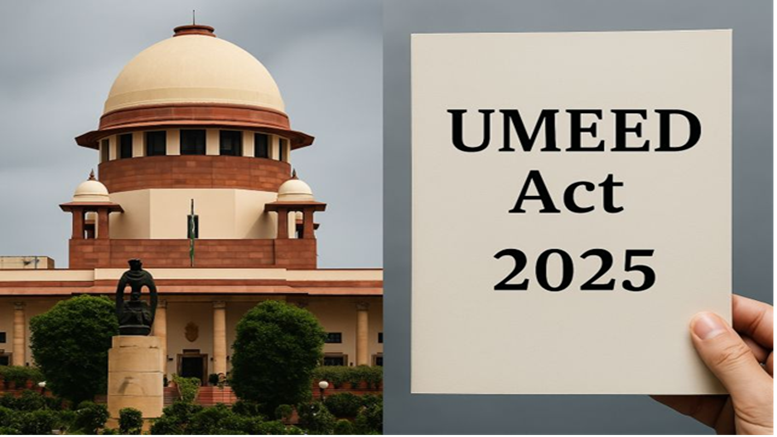- Courses
- GS Full Course 1 Year
- GS Full Course 2 Year
- GS Full Course 3 Year
- GS Full Course Till Selection
- Online Program
- GS Recorded Course
- NCERT (Recorded 500+ Hours)
- Polity Recorded Course
- Geography Recorded Course
- Economy Recorded Course
- AMAC Recorded Course
- Modern India, Post Independence & World History
- Environment Recoded Course
- Governance Recoded Course
- Science & Tech. Recoded Course
- International Relations and Internal Security Recorded Course
- Disaster Management Module Course
- Ethics Recoded Course
- Essay Recoded Course
- Current Affairs Recoded Course
- CSAT
- 5 LAYERED ARJUNA Mentorship
- Public Administration Optional
- ABOUT US
- OUR TOPPERS
- TEST SERIES
- FREE STUDY MATERIAL
- VIDEOS
- CONTACT US
UN IDENTIFIES SEVEN WORLD RESTORATION FLAGSHIPS
UN IDENTIFIES SEVEN WORLD RESTORATION FLAGSHIPS
16-02-2024
- In February 2024, The United Nations has identified Seven initiatives across Africa, Latin America, the Mediterranean, and Southeast Asia as World Restoration Flagships.
- These initiatives target ecosystems at risk of degradation and offer hope for both environmental conservation and economic growth.
- In 2022, Namami Gange Program Ranked in Top 10 World Restoration Flagship Initiatives by UN.
- The Namami Gange initiative, started by the Indian government, aims to restore the sacred connection to the Ganges while tackling pollution and deforestation.
- Notable achievements include rejuvenating 1,500 km of the river and restoring 30,000 hectares of forests, with plans to sequester 15 million tons of carbon by 2030.
- Coordinated by the National Mission for Clean Ganga under the Government of India, Namami Gange is supported by international partners such as the World Bank, Japan International Cooperation Agency, and German Development Agency.
Recently Recognized Seven UN Restoration Flagships:
- Restoring Mediterranean Forests Initiative: - Lebanon, Morocco, Tunisia, Türkiye
- Utilizes a unique approach to safeguard and rejuvenate natural habitats.
- Living Indus Initiative
- Approved by Pakistan after floods caused by climate change in 2022.
- Officially launched at the 27th Conference of Parties to the UN Framework Convention on Climate Change in Sharm el-Sheikh.
- Aims to restore 25 million hectares of the Indus river basin by 2030.
- Recognizes the Indus River as living entity, promoting similar protections for rivers globally.
- Involves Australia, Bangladesh, Bolivia, Brazil, Canada, Ecuador, India, New Zealand, Peru, and Sri Lanka.
- Acción Andina Social Movement - Argentina, Bolivia, Chile, Ecuador, Perú
- Led by the non-profit Andean Ecosystems Association (ECOAN).
- Aims to protect and restore one million hectares of Andean forests.
- Andean forests are a type of tropical and subtropical forest grow along the slopes of the Andes mountains in South America.
- Works to secure land titles for local communities and protect forests from mining and timber exploitation.
- Sri Lanka Mangrove Regeneration Initiative
- Science-driven program co-led by local communities, focusing on restoring natural balance.
- Since 2015 launch, efforts led to restoring 500 hectares of mangroves, as per the UN statement.
- Aiming to restore 10,000 hectares of mangroves by 2030.
- Terai Arc Landscape (TAL) Initiative - Nepal
- Aimed at restoring forests in critical corridors of the TAL, in collaboration with local communities.
- Community involvement includes citizen scientists, community-based anti-poaching units, and forest guards.
- TAL spans an 810 km stretch between the river Yamuna in the west and the river Bhagmati in the east, covering parts of India and Nepal.
- Measures include restoring 66,800 hectares of forests in Nepal, improving livelihoods for about 500,000 households.
- Supported the tiger population in the landscape shared by India and Nepal, which increased to 1,174.
- Aiming to restore 350,000 hectares of forests by 2030.
- Regreening Africa’s Agriculture - Ethiopia, Ghana, Kenya, Mali, Niger, Rwanda, Senegal, Somalia
- Enhances carbon storage, increases crop and grass yields, and improves soil resilience by preventing floods.
- Treats soil with fixed nitrogen, serving as a natural fertilizer.
- Growing Forests in Africa's Drylands Initiative - Mali, Senegal, Tanzania, Uganda, Kenya
- Aims to expand restoration from 41,000 to 229,000 hectares by 2030.
- Involves African farmers in planting tens of millions of trees annually.
- Generates over 230,000 jobs, contributing to sustainable development.
Understanding UN World Restoration Flagships
- Overview:
- The UN World Restoration Flagships are integral to the UN Decade on Ecosystem Restoration, led by the UN Environment Programme (UNEP) and the Food and Agriculture Organization of the UN (FAO).
- The UN General Assembly has designated 2021–2030 as the UN Decade on Ecosystem Restoration.
- These flagships are recognized through the World Restoration Flagship Award, a part of the UN Decade on Ecosystem Restoration initiative.
- Recipients of this prestigious award gain eligibility for technical and financial assistance from the UN, supporting their restoration efforts.
- Importance:
- Global acknowledgment and celebration of their successful restoration initiatives.
- Provision of technical and financial support, potentially up to USD 500,000 per selected initiative (specifically for developing countries).
- Attraction of global attention and investments towards restoration projects.
- Inclusion in the UN Decade’s publications, campaigns, outreach, advocacy, and educational endeavors.
- Listing in the UN Secretary-General’s Report to the General Assembly, amplifying their impact and visibility on the international stage.
Understanding Ecological Restoration
- Overview: Ecological restoration involves aiding the recovery of ecosystems that have been degraded, damaged, or destroyed.
- Causes of Degradation: Human activities such as selective logging, road building, poaching, overfishing, invasive species, land clearing, urbanization, coastal erosion, and mining contribute to ecosystem damage, degradation, or destruction.
- Aims and Objectives: Ecological restoration aims to initiate or accelerate ecosystem recovery by creating conditions for plants, animals, and microorganisms to naturally carry out the recovery process.
- Methods and Actions:
- Restoration methods may include removing invasive species, reintroducing lost species or functions, altering landforms, planting vegetation, adjusting hydrology, and reintroducing wildlife.
- Restoration is an ongoing process, continuing as the ecosystem recovers and matures. Unexpected challenges may arise during the recovery journey.
- Restoration and Conservation: Restoration should not be seen as a substitute for conservation. While it can restore biodiversity, structure, and function to ecosystems, it should not justify destruction or unsustainable use.
- India's Restoration Initiatives:
- Sundarbans Mangrove Restoration.
- National Plan for Conservation of Aquatic Ecosystems (NPCA).
- National Mission for a Green India (GIM).
- Western Ghats Forest Landscape Restoration.
- Green Wall.
- National Afforestation Programme (NAP).
- National Biodiversity Action Plan.
Conclusion: The recognition of these initiatives underscores the importance of collaborative efforts in addressing environmental challenges while promoting sustainable development globally, as emphasized by UN Goodwill Ambassadors and Advocates.

![img-PSYCHOLOGICAL WARFARE [PSYWAR]](https://i.filecdn.in/755esias/PSYCHOLOGICALWARFAREPSYWAR-1747206772505.jpg)

